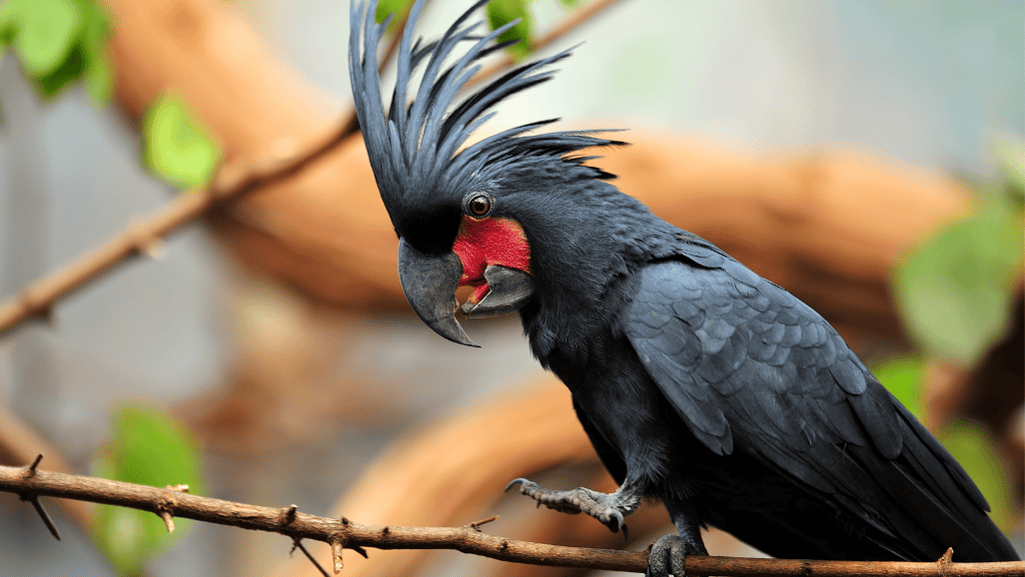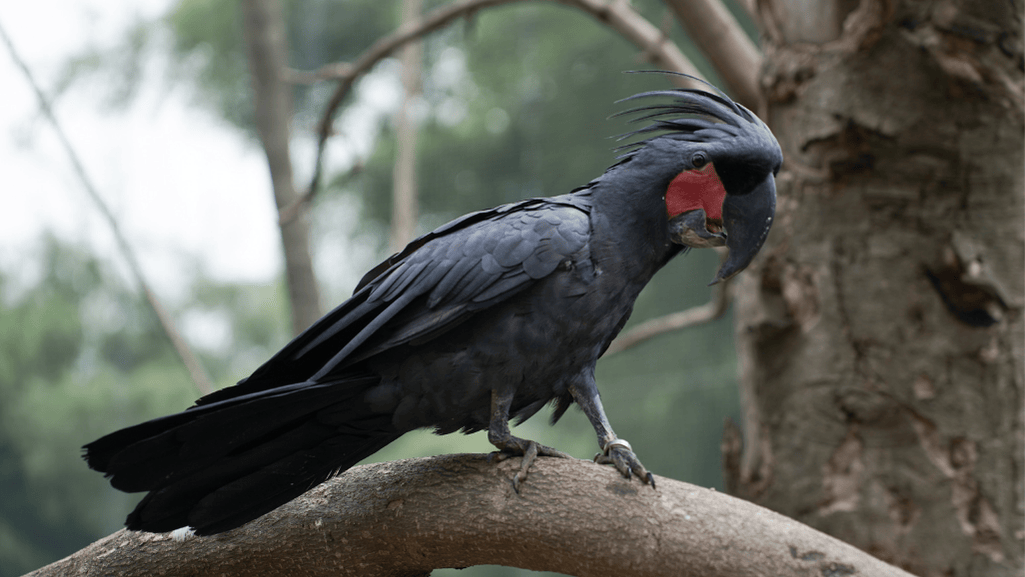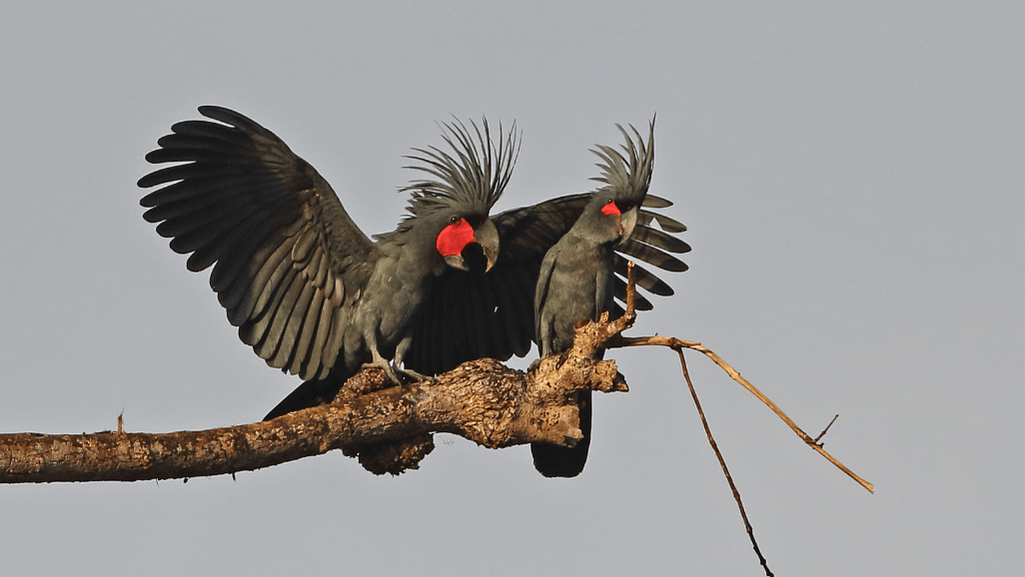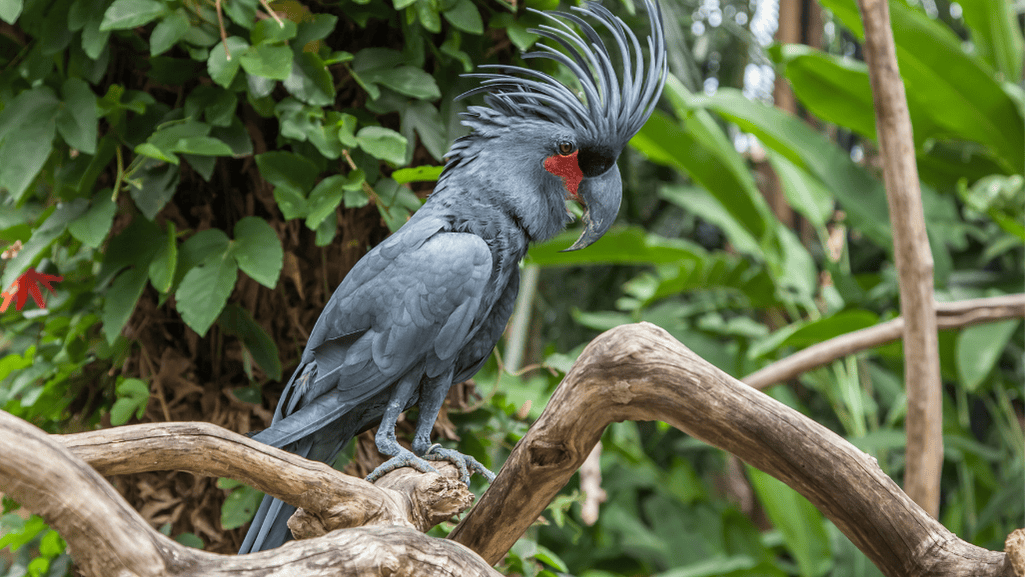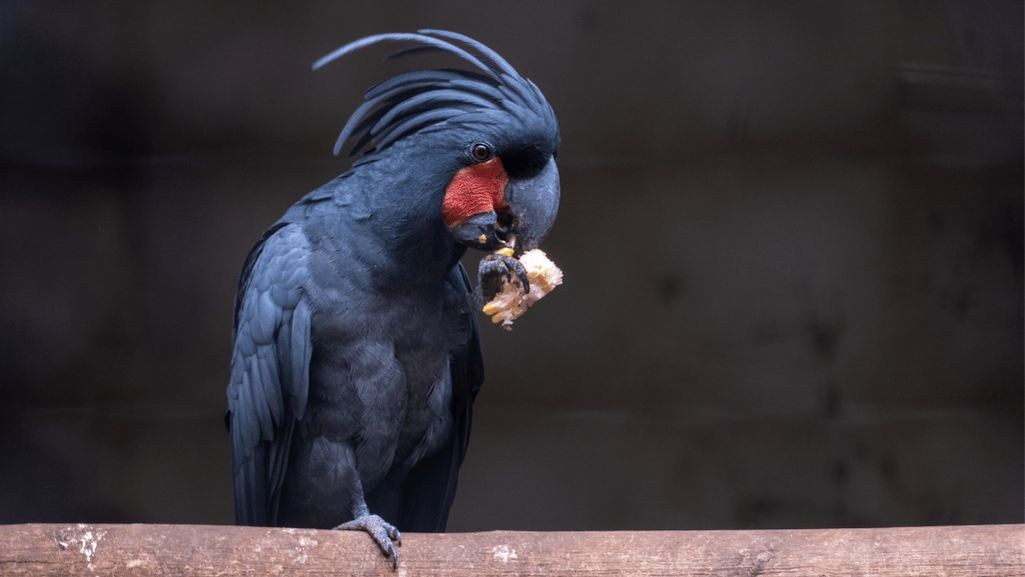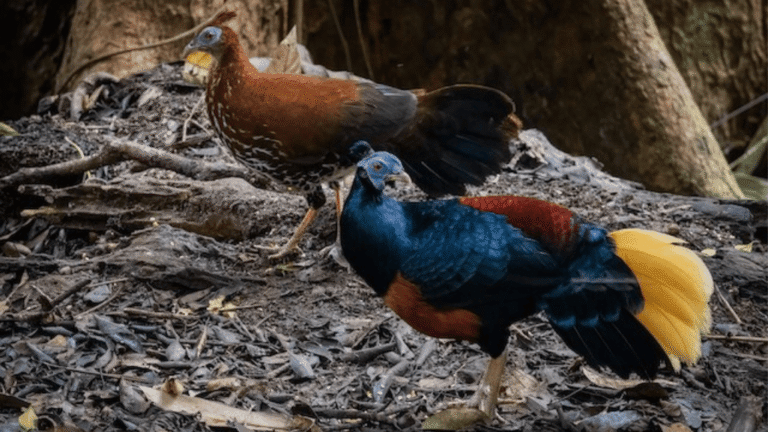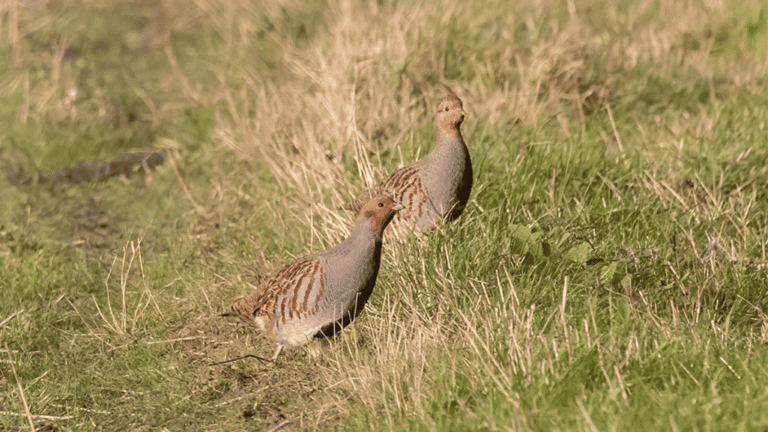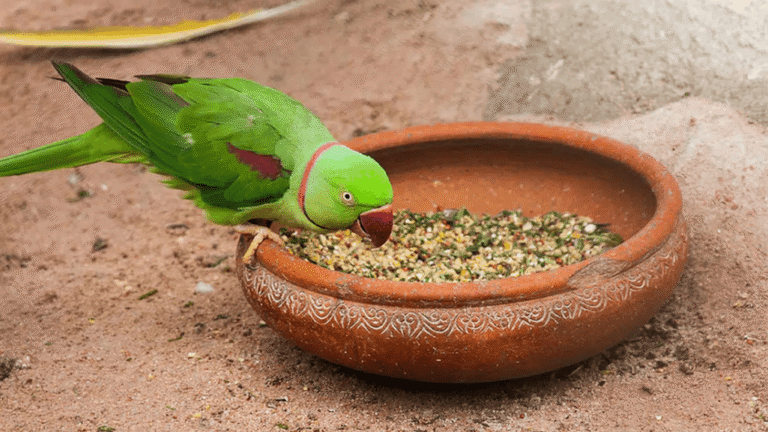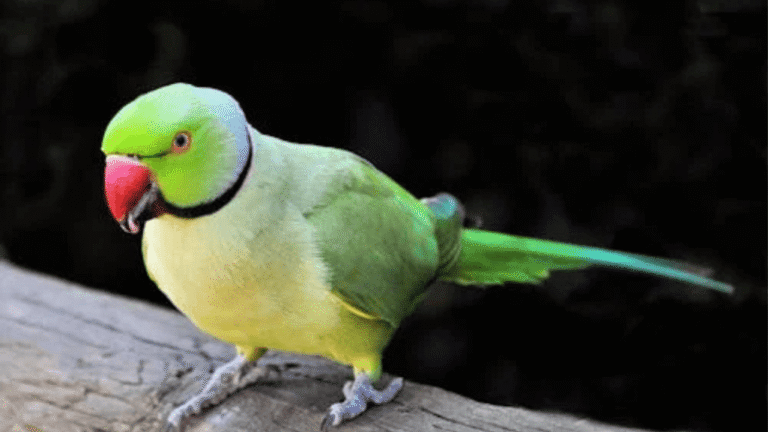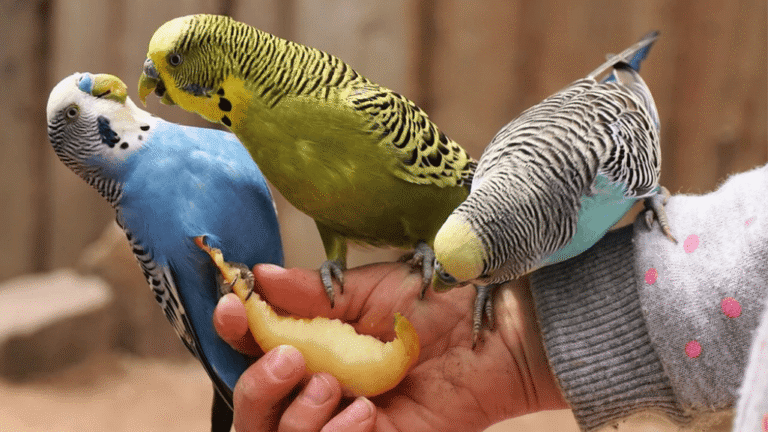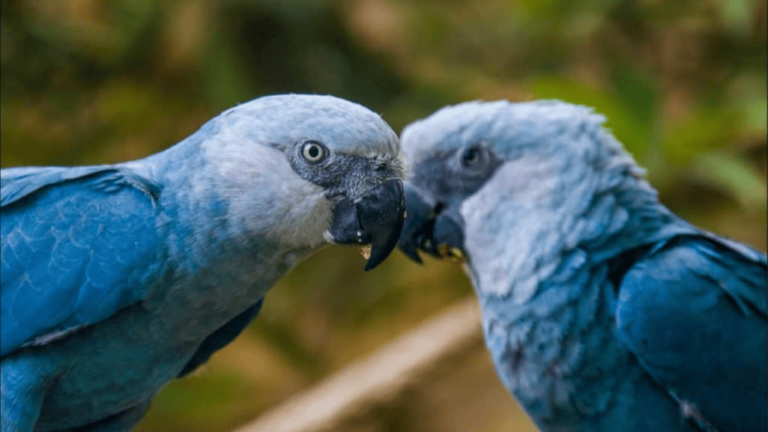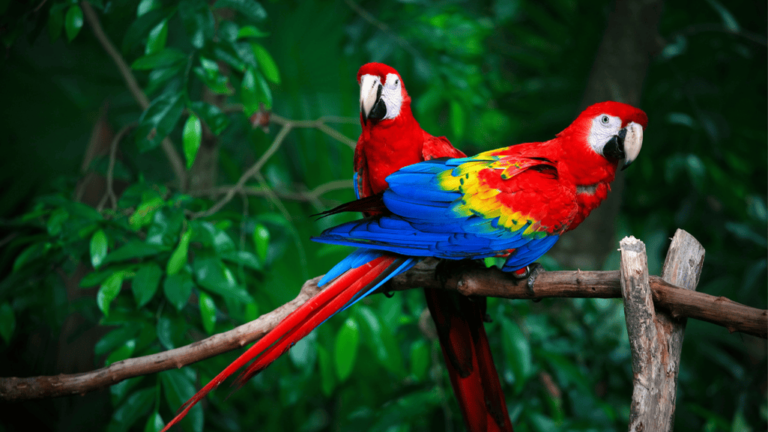The palm cockatoo is a stunning tropical bird with a large size. It is closely tied to the lush forests it lives in. Known as Probosciger aterrimus, it fascinates both fans and conservationists with its unique palm cockatoo behavior, special palm cockatoo diet, and vital palm cockatoo habitat. This habitat is found in Australia’s Cape York Peninsula, New Guinea, and nearby islands. As we explore further, the need for wildlife conservation for this exotic bird becomes clear.
Key Takeaways
- The palm cockatoo is known for its distinctive red cheek patch and strong bill, perfect for cracking nuts.
- These birds love tropical weather, living in rainforests and woodlands up to 1300 meters high.
- They are among the biggest parrots in Australia, weighing 500 to 1100 grams and having wings up to 100 cm wide.
- They show unique behaviors like complex social interactions and using tools for territorial displays.
- Conservation is key, as their survival is at risk due to habitat loss and the illegal wildlife trade.
- Their diet, mainly seeds and fruits, is crucial for forest growth.
Introducing the Majestic Palm Cockatoo
Welcome to a detailed look at the palm cockatoo species. This bird is truly unique and captures the attention of all who see it. Its distinctive appearance and behaviors make it stand out.
Overview of the Palm Cockatoo Species
The palm cockatoo calls the tropical rainforests of New Guinea and northern Australia home. It’s not just any bird; it’s a marvel in the avian world. There are three subspecies: Probosciger aterrimus aterrimus, Probosciger aterrimus goliath, and Probosciger aterrimus stenolophus. Each adapts to its environment in unique ways, from coastal areas to dense forests.
Despite a population of just over 30,000, the palm cockatoo faces many threats. Habitat loss, illegal wildlife trade, and predation are major concerns. It’s listed under Appendix I in CITES, showing it’s a species in need of protection, especially outside Australia.
Physical Characteristics and Distinctive Features
The palm cockatoo has glossy black feathers and a robust build. Its powerful beak is the largest among parrots, helping it eat and nest. Males are generally larger than females, showing a hint of sexual dimorphism.
Their bright red cheek patches are another stunning feature. These patches glow during social interactions or excitement. With their impressive crest and body length of up to 60 cm, they are truly a sight to behold. Young birds have light yellow markings that fade as they grow older.
| Characteristic | Description |
|---|---|
| Native Range | New Guinea, Northern Australia |
| Population | Slightly over 30,000 |
| Conservation Status | Near Threatened, Appendix I in CITES |
| Key Features | Glossy black plumage, large beak, red cheek patches |
The palm cockatoo’s striking features make it a symbol of wildlife conservation challenges. Yet, they are also a source of endless admiration and study. By protecting and understanding this large parrot, we ensure future generations can see its majesty in the wild.
Habitats of the Palm Cockatoo
The palm cockatoo, a majestic tropical bird, lives in various places mainly in Australia and Papua New Guinea. These birds are closely connected to the rainforest and monsoon woodlands. These areas give them shelter and are key for their survival.
The palm cockatoo habitat covers different heights, from lowland rainforests to high monsoon areas up to 1350 meters. They nest in large tree hollows, which protect them. This shows how adaptable they are but also how important it is to save their homes from logging and land clearing.
| Feature | Description |
|---|---|
| Typical Elevations | 0 – 1350 meters |
| Location | Northern Australia, Papua New Guinea |
| Habitat Types | Rainforest, Monsoon Woodlands |
| Conservation Status | Near Threatened; heightened in Australia to Vulnerable |
| Nest Placement | Tree hollows in old, large trees |
| Key Threats | Habitat destruction, illegal pet trade |
It’s important to understand how these tropical birds depend on their habitats. Saving these places is not just for the palm cockatoos but for many other species too. We need to stop habitat loss and the illegal bird trade to keep their calls alive in Australia and Papua New Guinea.
Palm Cockatoo Behavior and Social Interactions
Palm Cockatoos have a complex social structure. They are known for being monogamous birds. This means they form lifelong pairs, showing their commitment and stability.
The Monogamous Nature of Palm Cockatoos
Palm Cockatoos are unique among monogamous birds. They live in small groups, often with pairs that stay together forever. Their relationships help them survive and reproduce in their natural habitats.
Female Palm Cockatoos lay only one egg every two years. This shows how much both parents invest in their children.
Communication Methods and Vocalizations
Palm Cockatoos communicate in many ways, including whistles and screeches. These sounds help them in their social lives and when facing threats. Male Palm Cockatoos are famous for drumming with sticks against tree trunks.
This drumming is a way for them to show dominance and attract mates. It’s a unique behavior that shows their ability to use tools for communication. Each male has his own drumming style, which is recognized by others.
Learning about Palm Cockatoos shows how much care they need and the challenges they face. Habitat loss and the illegal pet trade are big problems. Understanding their behavior and social structures is key to saving them.
The Unique Diet of the Palm Cockatoo
The palm cockatoo diet shows how well they adapt to rainforests. These birds, known for cracking nuts, play a big role in seed dispersal. Their foraging habits are complex and vital for their nutrition and the ecosystem.
Foraging Habits and Preferred Foods
Palm cockatoos are skilled foragers. They use their strong beaks to get food from various sources. Their diet includes wild pandanus palm fruits, kanari tree nuts, and other seeds and fruits.
This shows their strength and their role in seed dispersal. They help keep their habitats healthy by spreading seeds.
Impact of Diet on Palm Cockatoo Health
Their diet affects their health and energy. Eating hard nuts and seeds keeps their beaks sharp and muscles strong. It also makes their feathers bright and their cheek patches vibrant.
Knowing about their diet helps us see the importance of these birds. They play a key role in keeping their ecosystems balanced and diverse.
Palm Cockatoos: An Avian Marvel
The Palm Cockatoo is a standout among the world’s birds. They live up to 60 years in captivity, showing great resilience. But, their conservation status is at risk due to habitat loss and poaching.
When we look at palm cockatoo interesting facts, their unique way of reproducing is striking. Female palm cockatoos lay just one egg every two years. This low rate highlights the need for careful conservation efforts.
To save palm cockatoos, we need to support wildlife conservation groups. We should also raise awareness of their importance and encourage eco-friendly tourism. Every small action helps protect these amazing birds for the future.
| Year | Nest Trees Lost | New Potential Nest Sites After Cyclone |
|---|---|---|
| 1999-2005 | 16 nest trees | 23 new sites in a 122-hectare area |
| Impact of Cyclone Monica (~2005) | 26% of nest trees destroyed by fire | Increased potential nest sites post-storm |
The table shows how habitat changes can affect palm cockatoos. It shows both losses and gains in nesting sites. This information is key for creating effective conservation plans to protect these birds.
Breeding Patterns and Reproduction of Palm Cockatoos
The palm cockatoo breeding habits are complex and unique. They build their palm cockatoo nest in large tree hollows. The nest is lined with twigs to keep it safe and warm for their eggs and chicks.
Nesting Behaviors and Parental Roles
Palm cockatoos are very loyal to their nests. They often use the same hollow year after year. The female lays one egg every two years, which is rare among parrots.
This low egg-laying rate affects their population. Both parents work together during incubation. The male finds food for the female. This teamwork helps their chicks survive.
Lifespan and Fledgling Independence
Palm cockatoos care for their young for a long time. Chicks stay in the nest for up to 100 days. This helps them learn important survival skills.
In the wild, they can live up to 50-60 years. They may breed several times, but each time is spaced out. This ensures each chick gets enough care.
| Statistic | Details |
|---|---|
| Average Breeding Frequency | Every 2.2 years |
| Generation Time | 17.7 years |
| Survival Rate of Fledgling | Approximately 20% |
| Conservation Status | Vulnerable (CITES Appendix I) |
The palm cockatoo breeding habits and palm cockatoo nest fidelity are fascinating. Understanding their reproduction is key to their conservation. Their long palm cockatoo lifespan offers a chance for research and conservation.
Palm Cockatoo Conservation: Status and Threats
The palm cockatoo, known as Probosciger aterrimus macgillivrayi, faces many dangers. It’s listed as Near Threatened and its numbers are dropping. This makes it urgent to act on palm cockatoo conservation.
Found in New Guinea and Cape York Peninsula, the palm cockatoo is a key part of the forest. Their numbers vary, from 1,800 to 640,000, showing their status is unstable. Mining and changed fire patterns harm their homes, adding to the palm cockatoo threats.
Efforts to Protect the Palm Cockatoo Population
Protecting the palm cockatoo is a big focus in conservation. Being on CITES Appendix I shows the world’s concern. In Australia, laws like the EPBC Act help protect them. Saving their homes is key, including keeping their nesting sites safe and managing fires well.
Challenges in Preserving their Habitat
Keeping their habitat safe is hard. Humans are pushing into their space, hurting their homes. Despite being endangered palm cockatoo in some places, their homes keep getting destroyed. We need to work together to save them.
To learn more about palm cockatoos and how you can help, explore detailed insights on their behavior and ecological roles critical in understanding the full spectrum of challenges and measures necessary for their conservation.
Palm Cockatoo in Culture and Aviculture
The palm cockatoo is a big deal in culture and bird keeping. It’s smart and looks amazing. But, it’s important to know a lot before you decide to care for one.
In many cultures, the palm cockatoo stands for strength and beauty. It shows its strong body and friendly nature. This bird is seen as powerful and a sign of the wild, from the Philippines to Australia.
In palm cockatoo in aviculture, these birds are very valued. But, they need special palm cockatoo care to stay healthy. They need a big space and a diet that includes fruits, flowers, and insects.
If you want a palm cockatoo for sale, know it’s a big commitment. They live long and need lots of attention and social time. This prevents bad behavior.
Thanks to better diets, like pellets, palm cockatoos are doing well in bird keeping. This change shows how much we’ve learned about caring for birds. You can read more about this at captive avian management.
| Feature | Description | Importance |
|---|---|---|
| Diet | Includes seeds, tubers, fruit, flowers | Essential for nutritional balance |
| Size | 55-60 cm in length, 910-1,200 g in weight | Largest among cockatoo species, requires spacious living conditions |
| Symbolism | Power, beauty | Influences cultural perception and desirability in aviculture |
| Care Needs | Large cage, diverse diet, social interaction | Crucial for health and welfare |
Knowing about palm cockatoo symbolism and their needs helps us appreciate them more. Whether in the wild or in our homes, they show the beauty and complexity of nature.
The Impact of Human Activity on Palm Cockatoos
The balance of nature greatly affects the palm cockatoo population. Activities like forestry, mining, and big farming harm their homes. The wildlife trade also hurts their numbers, making their survival harder.
Habitat Degradation and Wildlife Trade
Logging and farming destroy the homes of palm cockatoos. This leaves them in small groups that find it hard to survive. The wildlife trade is a big danger, as people want these birds for their looks and rarity.
Conservation Initiatives and Eco-Tourism Potential
Many groups are working hard to save these birds. They do this by protecting their homes and teaching people about them. Eco-tourism is also a good idea. It teaches people about these birds and helps local communities make money by protecting them.
| Study | Researcher | Year | Key Findings |
|---|---|---|---|
| Avian evolution and Gondwana biogeography | Cracraft J. | 2001 | Assessed the impact of historical geological events on avian diversity. |
| Multilocus molecular phylogeny of parrots | Wright TF | 2008 | Supported a Gondwanan origin of parrots. |
| Global songbird radiation | Moyle RG et al. | 2016 | Suggested that geological changes influenced bird evolution. |
| Social play in Australian magpies | Pellis SM | 1981 | Explored how environmental interaction influences behavioral development. |
| Cognitive evolution in birds | von Bayern AM | 2020 | Showcased tool-using behavior as a mark of cognitive evolution. |
Conclusion
Learning about palm cockatoo facts is key for bird fans and those who care about nature. These birds show how nature can change in amazing ways. Their big casques and loud calls make birdwatching exciting in Australia and Papua New Guinea.
But, their story also tells us about the fight to survive and the danger of losing natural places. The palm cockatoo’s status as an endangered species shows us the need to protect our planet’s animals. We must work together to save these birds and their homes.
The palm cockatoo has over 30,000 individuals, showing its genetic diversity. It lives in different places, from the coast to the dense forests. But, it faces dangers like being hunted and losing its home. This makes it urgent to protect its habitat.
Being listed under Appendix I in CITES means we must act fast to save the palm cockatoo. This is not just important; it’s the law to stop it from disappearing.
The palm cockatoo is special because of its connection to indigenous cultures and its role in keeping forests healthy. Both parents take care of their young, showing the dedication of this species. This care is what we must also show to protect them for the future.
By understanding the palm cockatoo, we can help make our world more colorful and full of life. We must work to keep our planet’s biodiversity alive and thriving.


